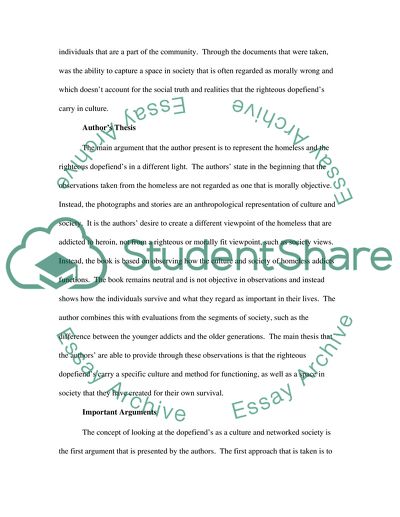Cite this document
(“Review Righteous Dopefiend by Philippe Bourgois and Jeff Schonberg Essay”, n.d.)
Review Righteous Dopefiend by Philippe Bourgois and Jeff Schonberg Essay. Retrieved from https://studentshare.org/miscellaneous/1568051-review-righteous-dopefiend-by-philippe-bourgois-and-jeff-schonberg
Review Righteous Dopefiend by Philippe Bourgois and Jeff Schonberg Essay. Retrieved from https://studentshare.org/miscellaneous/1568051-review-righteous-dopefiend-by-philippe-bourgois-and-jeff-schonberg
(Review Righteous Dopefiend by Philippe Bourgois and Jeff Schonberg Essay)
Review Righteous Dopefiend by Philippe Bourgois and Jeff Schonberg Essay. https://studentshare.org/miscellaneous/1568051-review-righteous-dopefiend-by-philippe-bourgois-and-jeff-schonberg.
Review Righteous Dopefiend by Philippe Bourgois and Jeff Schonberg Essay. https://studentshare.org/miscellaneous/1568051-review-righteous-dopefiend-by-philippe-bourgois-and-jeff-schonberg.
“Review Righteous Dopefiend by Philippe Bourgois and Jeff Schonberg Essay”, n.d. https://studentshare.org/miscellaneous/1568051-review-righteous-dopefiend-by-philippe-bourgois-and-jeff-schonberg.


